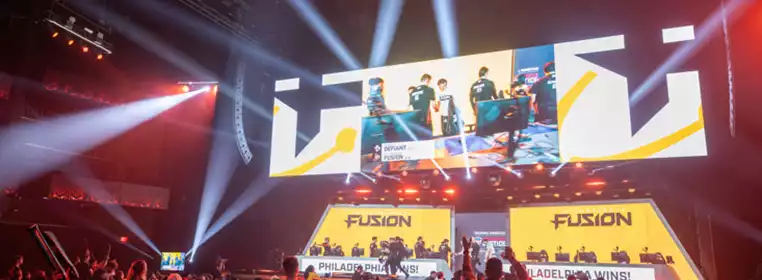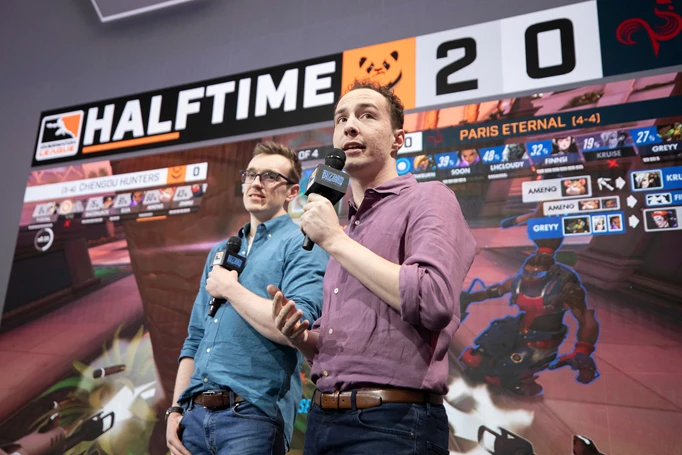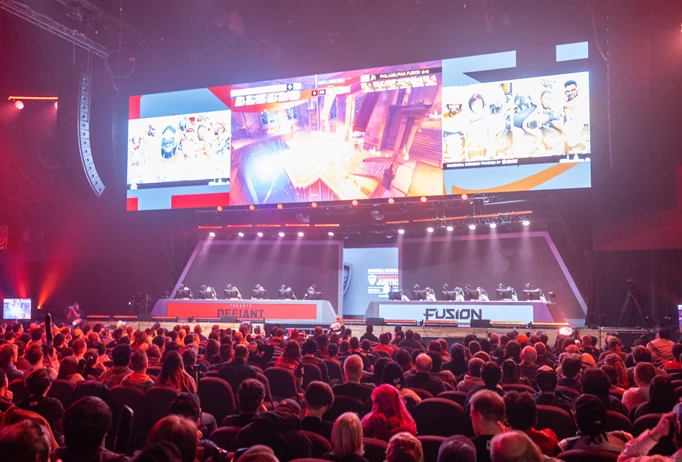Esport's Coming Home - Challenges and Opportunities for OWL's Contingency Plan

The world’s at home and so is esports. Due to COVID-19 a lot of us will be pinned down within our own four walls and are making the best of a bad situation. It also impacted the Overwatch League by having all homestands cancelled for March and April. Fortunately, our venues and most of our spectator seats are virtual and we have the luxury of being able to pivot our competition into online play.
A special Watchpoint episode announced next week’s schedule and that we will get Overwatch League matches played online, with Friday being added to the schedule in April to catch up on the missed matches due to the coronavirus.
And yet these circumstances still pose logistical challenges to players’ health and competitive integrity, though we should be empathetic to the League and cut them some slack in their execution. We ask: What are foreseeable issues that the league needs patchwork solutions for?
Latency, connection stability and the vehicle of esports
Going from playing on a LAN client to even low triple-digit ping makes a world of difference. Therefore, the league has split teams into three regions, based on the proximity of their home bases. Cutting down on the distance between the teams playing against each other naturally cuts down on latency related issues. We’re going to see Pacific West, Atlantic and Asian teams separated into these new three regions, with an adjusted schedule allowing them to play within these location-based clusters.
Whether or not online play and broadcasting, as well as viewing, work without a hitch is questionable. As countries increase their security levels and increasingly lock down their population indoors, internet usage will subsequently increase. Having talked to several network engineers and technicians, at least some regions will most likely run into capacity issues when the world turns to Netflix or their respective streaming service for entertainment. With the lack of sports on TV, there is a real opportunity for esports to fill those gaps while simultaneously destressing the networks.
Failsafes are in part on teams to make sure that their internet connection remains stable if they’re indeed to play for their home bases though it’s unlikely they will be able to assure safety measures like a second internet connection if they haven’t previously already invested in one, though at least initial feedback is that many of them did.
Furthermore, all hardware related issues will likely take more time to fix. To combat this, teams should have plenty of ready to go hardware available for a quick pit-stop exchange if the situation calls for it. Teams have been given ample amounts of hardware for practice, their homestands and to provide to guest teams. Unless these units are stored separately, no hardware shortage should arise. Going through the motions to exchange a PC or a monitor in limited time should be part of the drill for some personnel on each team with additional setups ready to go so the player only needs to roll his office chair over to the other table.
The schedule should also be prepared to be flexible for possible matches falling through due to unforeseen circumstances. Talent would do well to stock up on filler content to bridge potentially large breaks. Putting Reinforce, Jake, Custa or Sideshow on a telestrator would be a welcome addition. Platchat Lite should be a seriously considered format too.

 Click to enlarge
Click to enlargeCheat prevention
While we shouldn’t expect any of the teams to use those circumstances to their advantage by using some form of software cheat, there are other ways to gain a competitive advantage.
One of the most obvious ones is having coaches make significant calls during the matches, tracking ultimates and instructing rotations for their team. Especially during hero pools, in which players are not solidified in their understanding of the meta in terms of micro and macro, a coach talking them through the motions would likely lead to significant improvement of a team’s performance.
To prevent this, the stream would have to run at a significant delay to make second screen peaking ineffective and spectators for either team should, of course, be disallowed. It’s unlikely to be feasible nor sensible to send referees around the world to be present at each team house at the time of competition but a constant video feed (or at the very least a recording) of the play area with coaches being physically in another room should be required. This league’s stakes are high enough that the opportunity might be too enticing to resist.
Schedule asymmetry
It stands to reason that if homestands were to pick up over the season again (which I personally very much doubt), their preexisting schedule would cause some trouble to maintain. Teams will play others within their aforementioned regions more frequently at least until April but in some instances their second intra-divisional or their first trans-divisional match will already have happened during the contingency schedule meaning that if we were to seamlessly pick up again at a later date, some teams would either have to play each other three times, or the schedule would have to be adjusted somehow for the homestands. If we were to change the matches being played at each respective homestand after the crisis is under control (barring this will even happen during the regular season) this comes in tandem with other logistical challenges such as visas and is unlikely to work out. Potential solutions are to have some of the scheduled matches simply be show matches which don’t count towards the season’s total. However, this “wasted” broadcast time could interfere with the end of the season goal. If we end up never going back to the homestand model as the lock-down keeps on going, this won’t matter anyway or we’ll have to eat severe ping differences during the games to assure that everyone is playing the normal amount of games.
In my opinion, we should already be working on formats with the underlying assumption that no team will be able to move from their current location in the foreseeable future. While this doesn’t bode well for the Asian region with only four teams (since the Dynasty is in Los Angeles), solutions should be explored as the alternative will result in the cancellation of the entire league, as I don’t believe 200+ ping matches are playable. Alternative options would be to have smaller cups and include regional Contenders teams in them.

 Click to enlarge
Click to enlargeCould we see sp9rk1e sooner than we thought?
The Overwatch League has never given a detailed reason as to why players are barred from competition until the day they turn 18. Potential reasons for this could be that minors aren’t allowed to participate in competitions in venues and may require legal guardians to do so, which logistically falls outside the scope of the Overwatch League.
It appears to be allowed to have underaged players be in your team house even in another continent without a legal guardian present. It’s possible that the legal barriers in place that keep players from competing under the age of 18 would not apply to online play. If that was indeed the case, should we allow these players to compete earlier? Some teams might argue that these players weren’t picked up because of their age restriction and that it might be inflicting upon competitive integrity. Needless to say that it could theoretically open up slippery slope arguments for teams like Seoul Dynasty to pick up players like MAG or even younger ones from Contenders Korea who would’ve never become eligible this season.
Conclusions
We’re confronted with a unique set of challenges but also great opportunities. Esports proves to be antifragile, meaning that we might even gain from this crisis. Granted, Overwatch as an esport with its homestand model, unfortunately, is more impacted than other events as other business models put different weight into their live audience vs online viewership. It also arguably impacts our enjoyment more. And yet we should accept and forgive an increasing amount of unforeseeable issues arising. Planning that leaves plenty of room to fail is still advised. Some of the issues I mentioned won’t be able to be sorted and while I advocate for competitive integrity, I’m not going to fault the Overwatch League for not having solutions at hand. We’re just happy to watch Overwatch this year but if we can, let’s aim for the smoothest and fairest experience possible.
Editor's note: The Overwatch League has just announced its updated schedule. You can view the changes here.
Images courtesy of Blizzard Entertainment